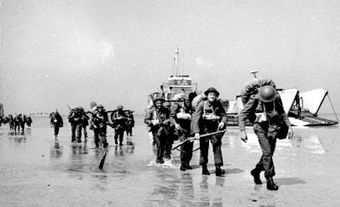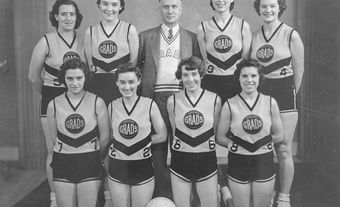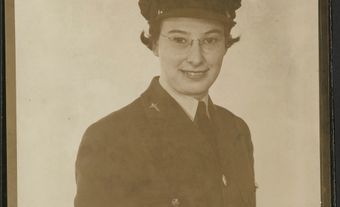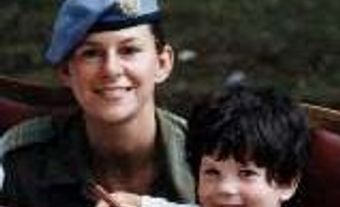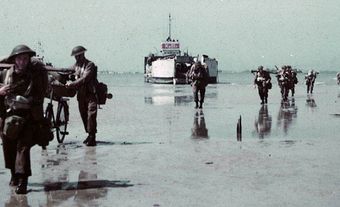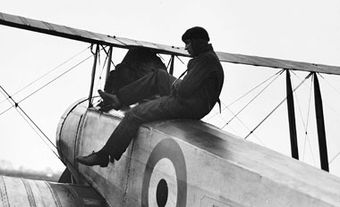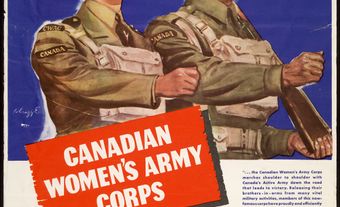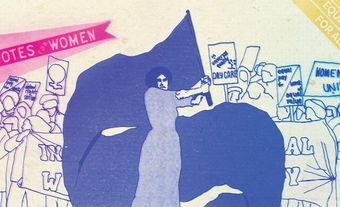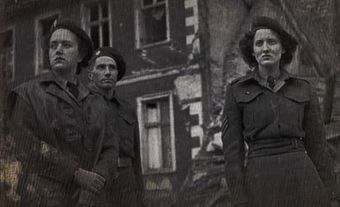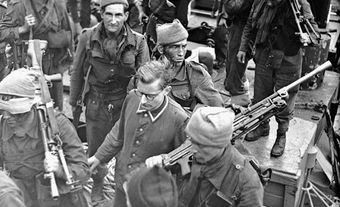Members of the Women’s Division (WD) of the Royal Canadian Air Force (RCAF) were wartime pioneers. Thousands of young Canadian women volunteered to serve at home and abroad during the Second World War as part of the air force. By replacing men in aviation support roles, they lived up to their motto — "We Serve that Men May Fly” — and, through their record of service and sacrifice, ensured themselves a place in Canadian history.

RCAF Women’s Division: Key Facts
|
Founded on 2 July 1941 as the Canadian Women’s Auxiliary Air Force (CWAAF); became RCAF Women’s Division on 3 February 1942 |
| Disbanded on 11 December 1946 |
| 17,038 women served in the RCAF Women’s Division |
| 30 died on active service |
| Personnel served in Canada and overseas, including headquarters of the RCAF Overseas and No. 6 (RCAF) Group of RAF Bomber Command in Britain |
| Women served in 69 of 102 trades in the RCAF, including aircraft maintenance and air traffic control |

Women's Service Restricted
When Canada entered the Second World War on 10 September 1939, thousands of Canadian men flocked to the recruiting centres. Canadian women also wanted to serve their country, but the government was reluctant to enlist them in the armed forces, except in medical and nursing roles. Frustrated, many joined existing volunteer service organizations, such as the Red Cross, or formed paramilitary groups through which they could contribute to the war effort.
However, by the second summer of the war, the initial flood of male recruits was slowing down at a time when demands on the services were increasing. For the first time, serious consideration was given to the possibility of women entering the service in non-combat and non-medical roles. Supporters of this idea were quick to point out that the British had been employing women in a variety of uniformed positions since before the start of the war. On 2 April 1941, representatives from the Canadian Army, Royal Canadian Navy and RCAF met in Ottawa and decided that there was no requirement to recruit women. Three months later, the air force would change its mind.

Auxiliary Air Force Created
The RCAF was expanding rapidly, primarily due to the needs of the British Commonwealth Air Training Plan (BCATP) in Canada. To meet the demand for instructors and support staff, more and more Royal Air Force (RAF) personnel were arriving in Canada, some of whom were members of the British Women’s Auxiliary Air Force (WAAF). Neither senior RCAF officers nor Canadian politicians relished the idea of explaining to hostile female voters why British women could serve in the air force, but not Canadians. Therefore, on 2 July 1941, the federal Cabinet authorized the formation of the Canadian Women’s Auxiliary Air Force (CWAAF), and the RCAF became the first Canadian military service to actively recruit women.
Kathleen Oonah Walker, the former head of the transportation service for the Red Cross in Ottawa, and Jean Flatt Davey, a doctor from the medical branch of the RCAF, became the first two members of the CWAAF. To them fell the enormous tasking of recruiting the initial group of women from across the country that, after training, would form the backbone of the organization.
Early applicants had to have high school entrance level education, and be "of the highest possible character," with a "high sense of leadership and accountability." As time went on, women already employed in the civil service were not permitted to join, as their work was considered essential to the war effort. Approximately 2,000 women responded to the initial call to join the Air Force, of which 150 were selected. Thousands more would follow.

Did you know?
Dr. Jean Flatt Davey was the first woman medical doctor to become a commissioned officer in the Canadian armed forces. She returned to civilian medicine in 1945 and was chief physician in the department of medicine at Women’s College Hospital (Toronto) from 1950 to 1965.

Training Begins
Basic training first took place in Toronto at No. 6 Manning Depot, the former Havergal College girls school. The new recruits started arriving in October 1941 and training began in earnest the following month under the watchful eye of four members of the British WAAF, loaned to the RCAF as instructional staff. A few months later, the graduates from amongst the initial 150 women were selected to fill senior officer and non-commissioned positions within the CWAAF organization.

In early 1942, legal concerns were raised about the applicability of military law and the granting of air force officer commissions to “auxiliary” (or non-regular air force) personnel. Therefore, on 3 February, the CWAAF became the RCAF (Women’s Division) — a part of the permanent RCAF — and was placed on active service for the defence of Canada. As such, the “WDs”, as the Women’s Division was popularly called, were subject to the same laws, discipline and liabilities as the men. However, they were not paid the same. Despite being part of the RCAF, WDs were initially paid only two-thirds of what a man received in the same occupation. RCAF senior officers raised this inequity several times throughout the war, but the best that could be achieved was a raise in pay, in July 1943, to 80 per cent of a man’s wage and acknowledgement that both sexes received the same specialist and duty allowances.

Expansion
At first, occupations for WDs were limited to trades similar to civilian occupations then readily available to Canadian women, such as clerks, fabric workers and cooks. As WD numbers grew, the RCAF would eventually employ women in 69 of 102 trades, including traditionally male-dominated occupations such as aircraft maintenance and air traffic control. Banned from combat and from flying in general, there was a recommendation sent to the government in January 1943 that qualified WDs be allowed to undertake “light” flying duties due to a perceived shortage of pilots, but no action was taken.
Still, by 1943 WDs were a fixture at RCAF stations and headquarters throughout Canada. The first WDs to serve overseas left Canada on 21 August 1942, and by December 1944, almost 1,500 could be found throughout Britain as part of the headquarters of the RCAF Overseas and No. 6 (RCAF) Group of RAF Bomber Command.
In total, 17,038 women served in the RCAF (WD) during the Second World War. At its peak, in January 1944, the Women’s Division fielded 15,556 personnel at home and abroad. Thirty died while on active service. They had joined the RCAF for adventure, to get away from home, acquire a well-paid job or to serve their country in time of need. Many were decorated for their hard work and sacrifice. By December 1946, with the war over and the number of military personnel shrinking to peacetime levels, the last WD was discharged from the RCAF.
Did you know?
Women served in many trades in the RCAF during the Second World War. This included occupations already open to women in civilian life, such as administrative and clerical work, fabric working, cooking and laundry. As the war went on, more trades opened to women, including ones traditionally dominated by men. By war’s end, women were working as weather observers, photographers, wireless operators, pharmacists, dental assistants, parachute riggers, aircraft mechanics, air traffic controllers and analysts.

Significance
Although they had to deal with the social, economic and institutional barriers of the day, the WDs demonstrated to the nation in general, and the RCAF in particular, that women could be an integral part of Canadian aviation. Many WDs were honoured for their service during the Second World War: 50 were mentioned in dispatches (MID), 39 received the BEM (British Empire Medal) and 16 were awarded the MBE (Member of the Order of the British Empire), including Kathleen Oonah Walker and Wilhemina (Willa) Walker. Dr. Jean Flatt Davey was awarded the OBE (Officer of the Order of the British Empire).
So strong was the WD’s record of service that in 1951, when the RCAF began its Cold War expansion, women were almost immediately sought after as air force recruits. There was one important change, however: the wartime motto, “We Serve that Men May Fly”, was no longer used, just as the WD formation itself ceased to exist. Women simply joined the RCAF as any man would, and followed its motto: “Per Ardua ad Astra” ("Through Adversity to the Stars"). Women were in the air force to stay.
As of May 2023, women make up more than 20 per cent of the RCAF: 21.7 per cent of officers and 19.5 per cent of non-commissioned members (NCMs). In total, women comprise approximately 16.5 per cent of the Canadian Armed Forces (regular force and primary reserve): 19.6 per cent of officers and 15.4 per cent of NCMs.

 Share on Facebook
Share on Facebook Share on X
Share on X Share by Email
Share by Email Share on Google Classroom
Share on Google Classroom
